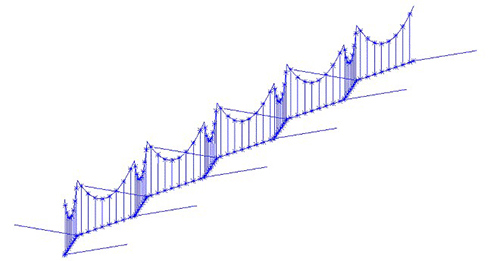Making virtual railway testing a reality
On-track testing of new and modified rolling stock can be challenging and expensive. Ilse explores how virtual testing can reduce real-life test requirements, improving project performance
Why do we need virtual testing?
During the certification phase of new or modified rolling stock, I observe traditional on-track testing becoming increasingly difficult and consequently more costly for clients. Limited availability of test tracks, stricter safety requirements and high costs to plan and replan test runs are often key reasons for testing challenges experienced.
In addition, on-track tests are not always desirable from a safety perspective as some tests can be damaging to the trains or the infrastructure. Obvious destructive examples are derailment and crash tests. Therefore, to minimise costs and track the testing time required, I believe it is increasingly important to consider and use innovative alternatives where possible, thereby reducing the on-track testing scope in projects.
What is virtual testing?
Virtual testing (or virtual certification) is a useful alternative to physical testing. Virtual testing can involve full computer simulations, but it also encompasses tests where the system to be evaluated is placed in a simulated environment. This is known as ‘Hardware in the loop’ or ‘Software in the loop’ testing. At Ricardo we have developed many possibilities to test both vehicles and infrastructure virtually. In my opinion, it is likely that vehicle testing will never be fully virtual, but it can certainly help significantly reduce the on-track test requirements, saving clients both time and money.

Even if you have access to on-track test facilities, I would still consider using virtual testing. Its use can significantly reduce both planning and safety risks, as well as the overall project cost. Who can ignore these benefits? How much time and money can be saved depends on the balance between the effort needed to create a model and the cost of on-track testing. If an existing model can be reused, then virtual testing becomes very interesting.
What types of testing can be virtual?
I believe that the following types of testing are most interesting to 'virtualise', due to the current high costs for on-track testing:
- Running dynamics
- Brakes and Wheel Slide Protection (WSP)
- Pantograph contact force
- Noise emissions
- Electrical system compatibility / harmonics
- European Train Control System (ETCS)
For some of these, testing is already possible in a virtual environment, for others it is still something in development.
Of course, with the use of virtual testing, one of the most important aspects is that the models are validated, to ensure they represent the actual system under test. Where virtual testing is already allowed by standards, those standards prescribe how the validation with measurement data needs to take place, (for instance in Annex T of EN14363).
How do you validate a model if you have not yet built the train? For this reason, virtual testing makes most sense for vehicles based on a shared platform, where the differences with already tested and delivered vehicles are relatively small or where vehicle overhaul and component upgrades and modifications are to be evaluated. In these cases, validation can be achieved by gathering validation data on vehicles already in operation, or, even better, by utilising the measurement data from earlier type testing with these vehicles.
Virtual testing in use
A great example of using virtual testing at Ricardo are pantograph simulations in accordance with EN50318 (a service we provide with our RiPAC tool). These simulations are often performed in combination with on-track contact force measurements to reduce the number of required physical tests. The model used is validated for a class of overhead line systems, and the validation is therefore independent of the type of vehicle. This means a model can be easily reused for other vehicles or configurations. If a validated model is not yet available, the results of the on-track contact force measurements can be used for model validation in retrospect.

Why invest in virtual testing models?
In my experience, developing a virtual model will always be a wise investment. Once created it can be used to investigate vehicle behaviours in the design, certification, and operational phases of a vehicle life. To maximise the return on investment in a virtual model, multiple stakeholders throughout the vehicle's lifecycle can utilise it, for example, the manufacturer, the owner, the maintainer, and perhaps even the operator. When upgrades and retrofits are completed during the vehicle life, then once again a validated model can be used as a basis to aid the evaluation of the changes before they are physically made.
As with all models, they are only as good as their validation, and I am considering discussing the challenges of model validation in a future blog. In the meantime, if you want to find out more about our vehicle testing or virtual testing services then see where we can help here. Of course you can always get in touch to discuss any challenges you might have around testing either real or virtual.










